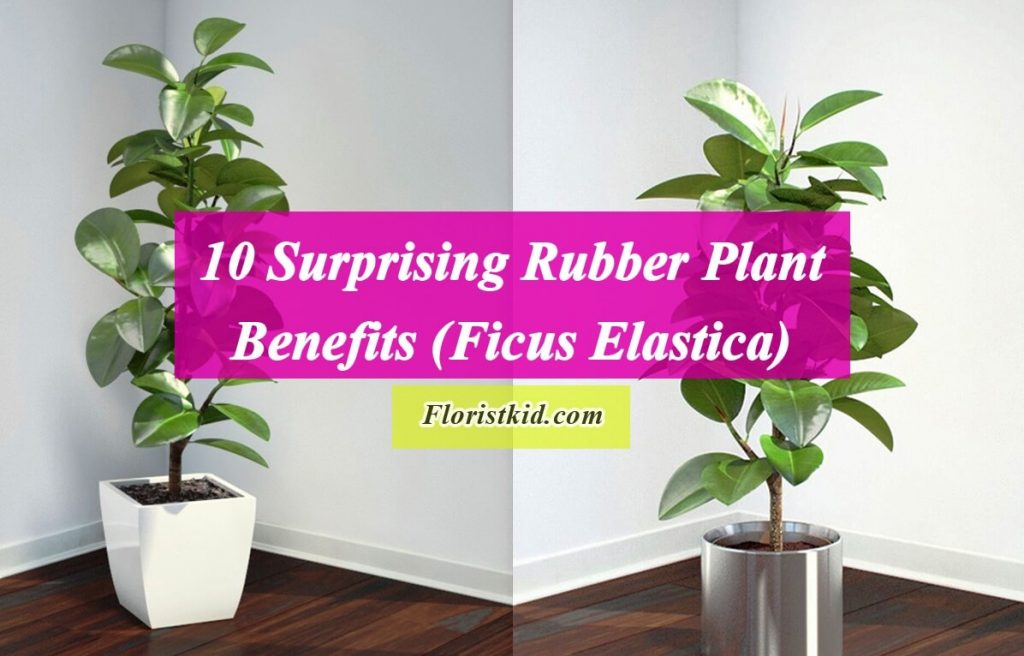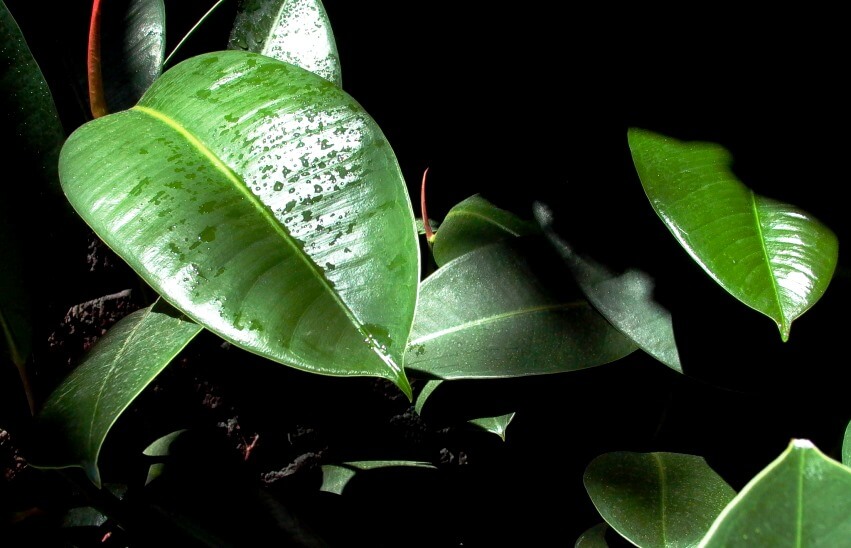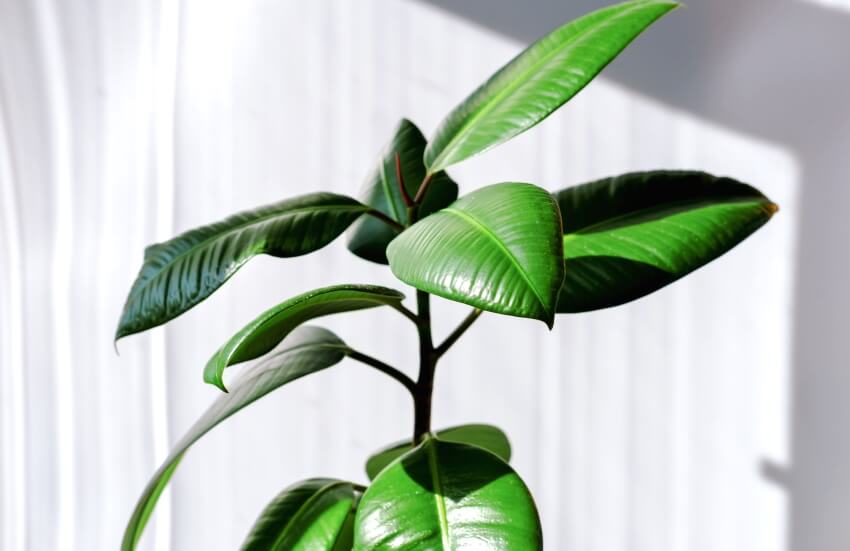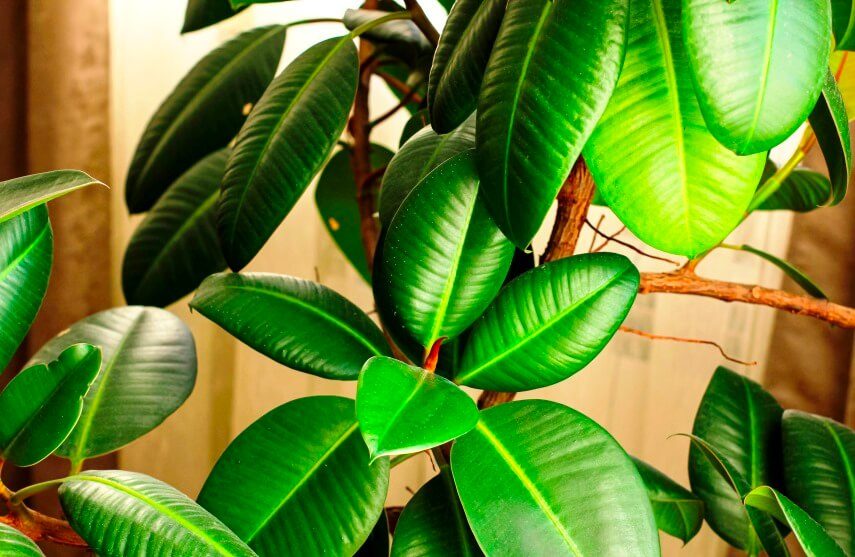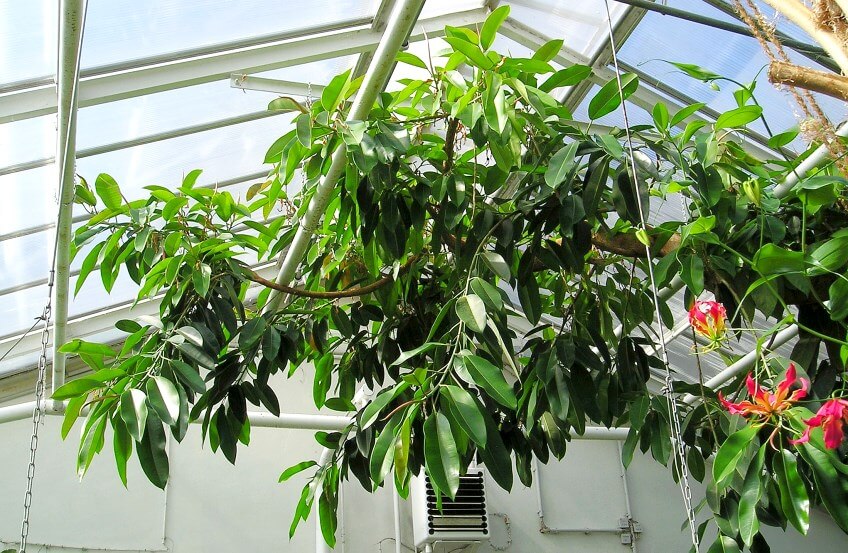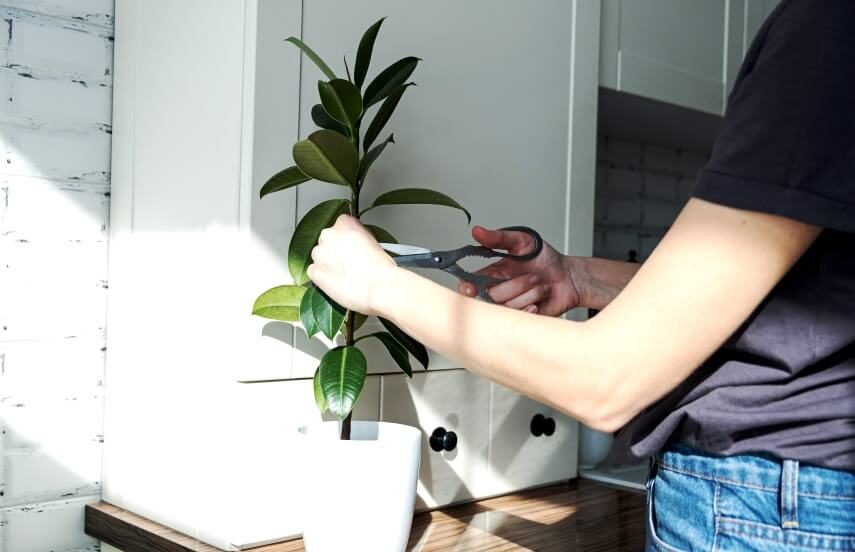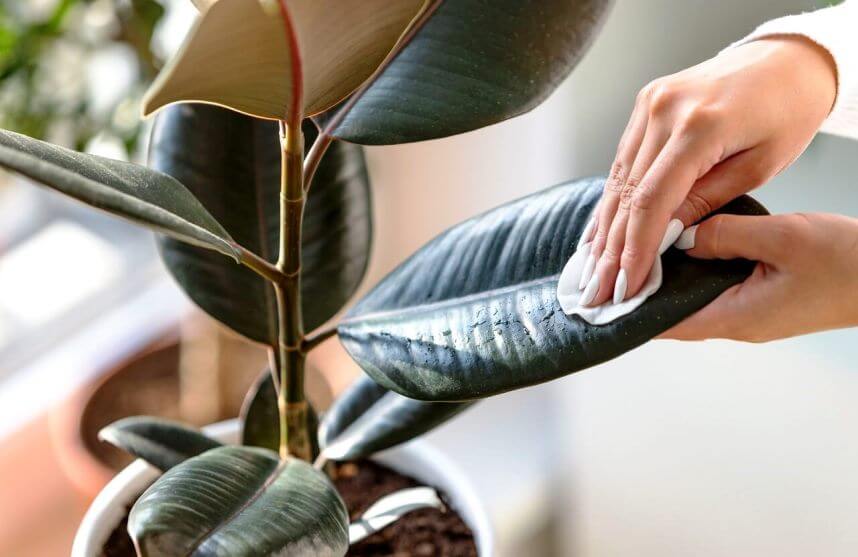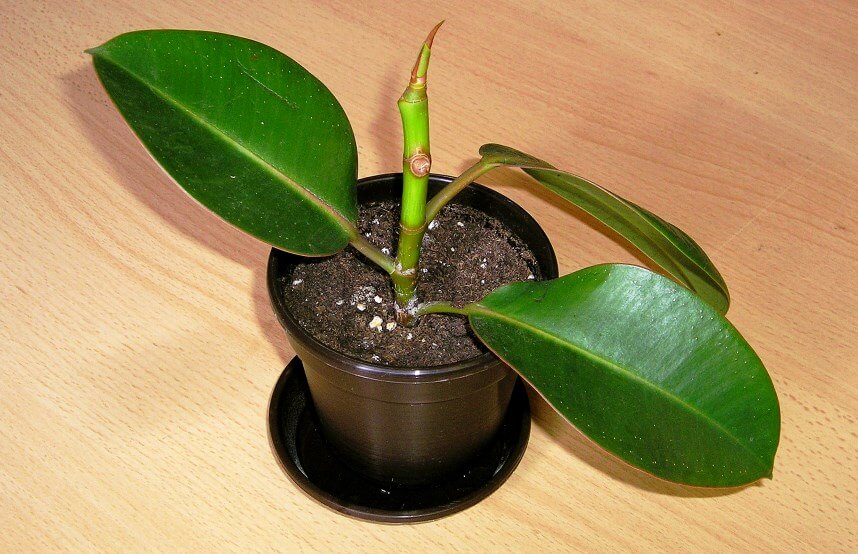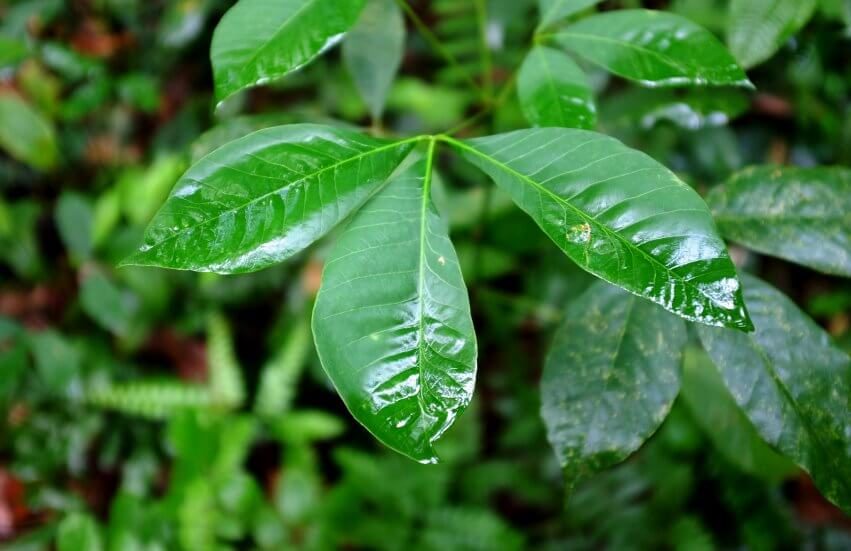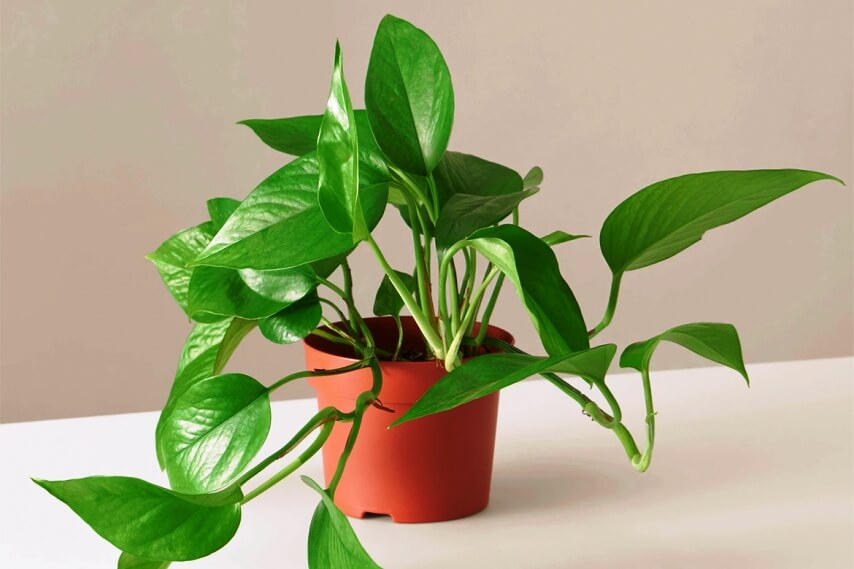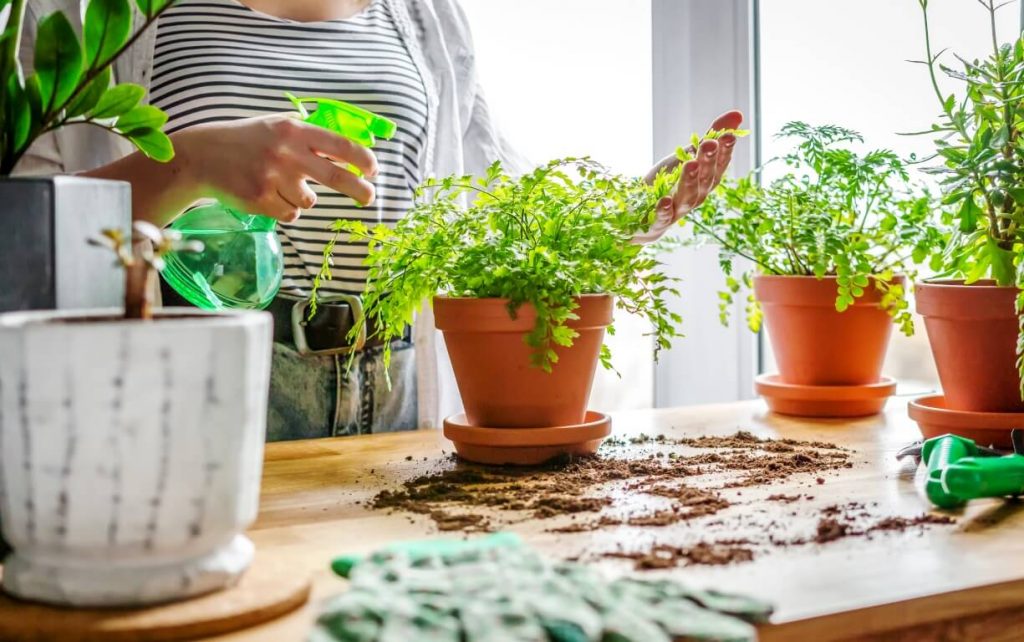The rubber plant, Ficus elastica, is a large to medium-sized houseplant with a lovely leaf. This plant is a member of the Moraceae family and the fig genus. Rubber plant’s lovely waxy leaves make it distinctive and enhance the room’s artistic theme.
Rubber trees are resilient, simple to grow and maintain, lovely to look at, and they can add warmth to a cold spot in any house or office. Due to various benefits of rubber plant, This article will review a few of the most significant rubber plant benefits.
If you are interested in houseplant benefits, you can also read
<<Wandering Jew Plant Benefits>> and <<Peace lily Benefits>> articles.
Source: beavela
About Rubber plant
Ficus elastica is an evergreen tropical tree species indigenous to southern China, Southeast Asia, and Indonesia. It makes a wonderful houseplant. It can withstand indoor lighting conditions, and NASA has even endorsed its ability to filter the air.
Additionally, the plant has a unique past. The rubber fig and rubber tree are nicknames for Ficus elastica, which has been used to generate rubber along with Hevea brasiliensis. In tropical Northeastern India, Ficus elastica roots are utilized to create unique “living bridges”!
In order to build a living bridge, the rubber plant roots are guided along a dead tree trunk that has been placed across a river. To finish the bridge, more roots are trained to grow to the opposite side and thicken when the trunk rots [1].
Rubber plant benefits
For around 30 years, Rubber Plants were quite well-liked, but then people moved into smaller, more contemporary houses and apartments. The enormous Rubber Plant in the corner was one of the first items to disappear as space became limited!
They were scarce and went out of style. Fortunately, thanks to rubber plant benefits, they have returned to the lifestyle. They are now major statement houseplants once more.
Rubber plant benefits are numerous, making it reasonably beneficial to keep this plant indoors. They are beautiful, easy to care for, and can purify the indoor air. The following are some of the most significant benefits of Rubber plants:
Air purification
According to NASA’s clean air research, the rubber plant is one of the houseplants that removes toxins from the air. Formaldehyde in the air around the rubber plant was found to be reduced. Along with VOCs, it also purges the air of carbon dioxide and carbon monoxide.
According to Dr. Wolverton, the rubber plant is one of the best indoor plants for purifying the air. Additionally, it has excellent ratings for resilience to pests and environmental factors. It also has a high transpiration rate, which raises the humidity in the space it inhabits. By putting a rubber plant in your house, you can lessen your risk of developing respiratory allergies, which can result in conditions like asthma.
Rubber tree – source: Maja Dumat
Low- maintenance
Under the right circumstances, rubber plants can grow rapidly. They are resilient, forgiving, and easy to satisfy. Keep their soil slightly moist and give them plenty of indirect sunlight to keep them healthy and green.
Just ensure to keep rubber plants out of the reach of kids and animals because latex can be harmful if consumed and can also irritate the skin.
Easy propagation
Since rubber plants can become very tall, they periodically require pruning. After pruning, you can use those cuttings to produce new rubber tree plants. Rubber plants can be easily multiplied by re-rooting their cuttings.
Getting a good cutting is the first step in growing a rubber tree plant from cuttings. The cutting should contain at least two pairs of leaves and be around 6 inches (15 cm) in length.The bottom set of leaves on the cutting must be taken off. These cutting can optionally be dipped in rooting hormone.
The rubber tree cutting should next be placed in moist but quick-draining potting soil. Ensure that the intact leaves do not come in contact with the glass or plastic while covering the cutting with either a jar or transparent plastic.
The rubber tree plant cutting should be placed in a warm area with indirect lighting. These cutting should have roots by two to three weeks [2].
Easy to clean
Rubber plant leaves have a waxy texture which makes wiping them clean easier. In addition, this characteristic enhances the indoor aesthetic appeal of this houseplant. It is also worth mentioning that young rubber plant leaves are green with a mahogany hue.
Feng shui plant
One of the plants that fits anyplace is the rubber plant. It has pleasing aesthetics and even more outstanding qualities because the rubber plant is the best ficus for eliminating poisonous gases from a house.
Rubber plants stand for wealth, joy, and abundance. According to feng shui principles, the spherical leaves of the rubber plant make it a perfect candidate to be positioned in a corner in order to soften the sharp angles [3].
Source: Maja Dumat
No Allergy issues
One of the rubber Plant Benefits is that it does not cause any allergies. Many people complain that certain houseplants trigger allergic reactions due to their sensitivity to pollen grains. Since the rubber plant does not produce pollen indoors, this is not the case for this plant. There is zero risk of an allergic reaction when it is placed indoors.
Curing skin rashes
This plant’s leaves have the ability to treat skin rashes. This can be accomplished by repeatedly massaging the area with crushed fresh leaves. Rheumatic disorders may also be treated with plant roots. Boil two glasses of water with 30 to 50 grams of the roots until just one glass is left. Allow it to cool, then drink it [4].
Source: Jnzl’s Photos
Anti-Inflammatory effect
It is also known that the leaves of the Ficus elastica plant contain analgesic compounds that can treat inflammation. Simply crush the fresh leaves, then use them to massage the injured region. The herb can be used to treat inflammation of the teeth in addition to skin conditions [4].
Noise reduction
Plants with a lot of broad leaves, like the rubber plant, provide excellent sound barriers because the surface of their leaves can absorb sound vibrations and decrease the noise. Growing a rubber tree can help you minimize noises from the outside, your neighbors, and even from home appliances.
Stress reduction
The last rubber plant benefit is its ability to lessen stress in people. Research published in the Journal of Physiological Anthropology shows how being among indoor plants can lessen stress on the body and mind. Your productivity naturally increases when your stress level rises, enabling you to work longer hours and improve your mental clarity.

